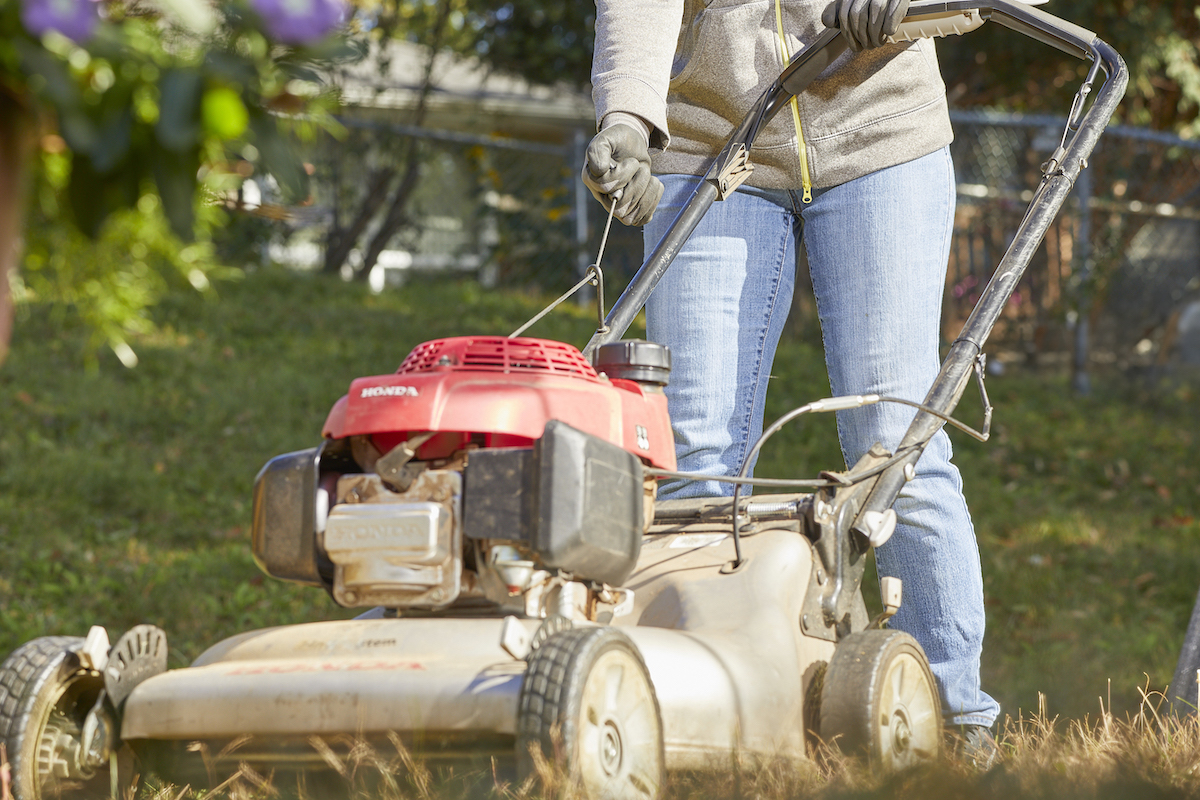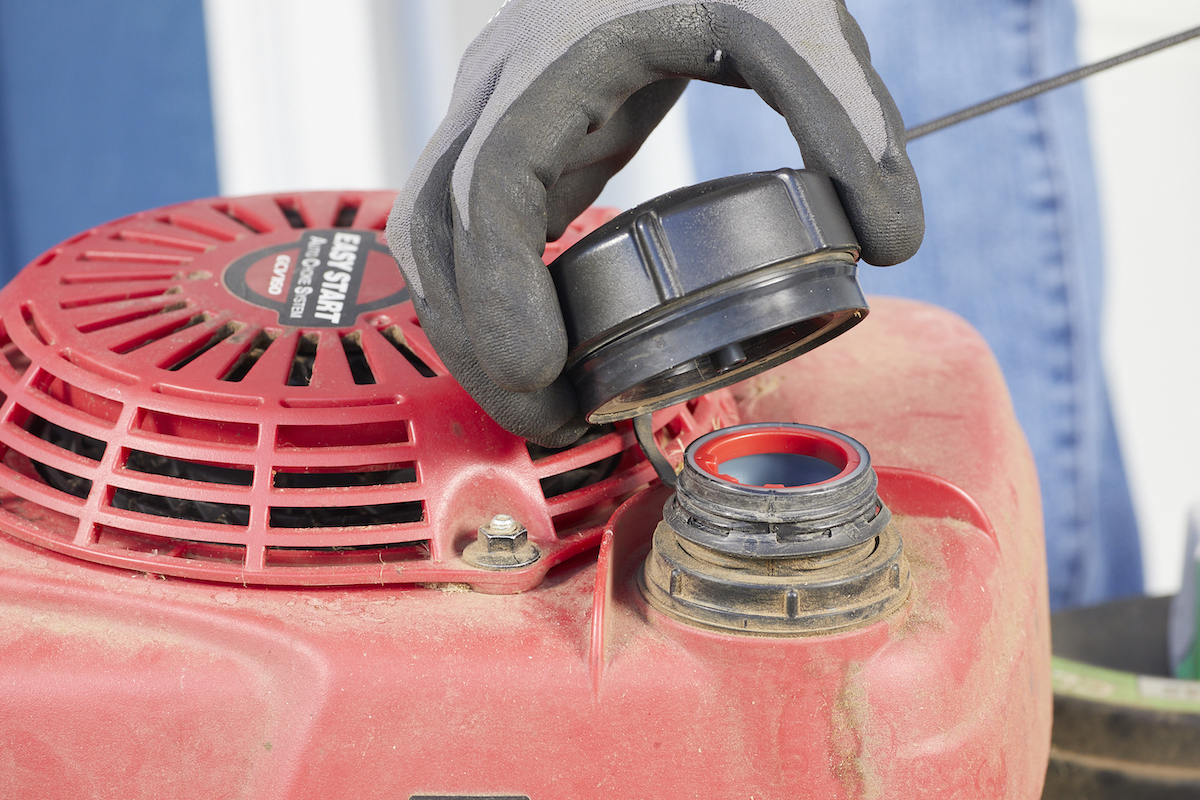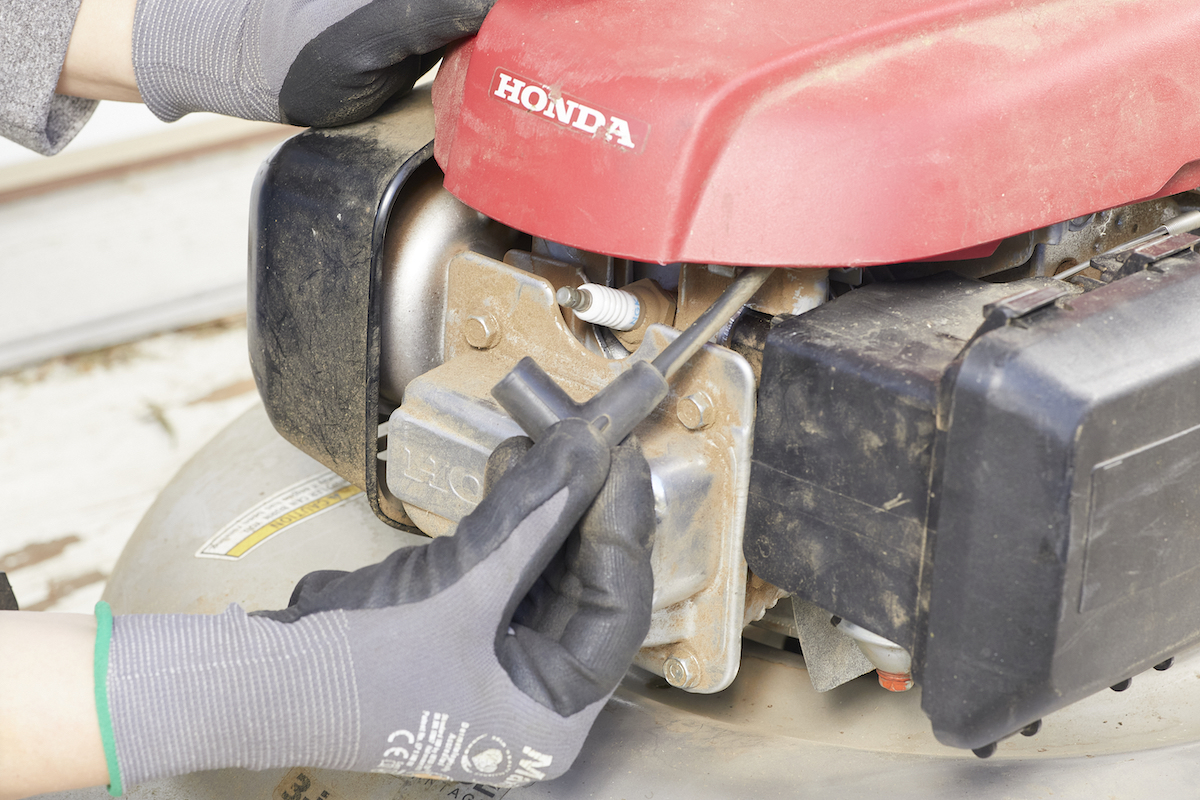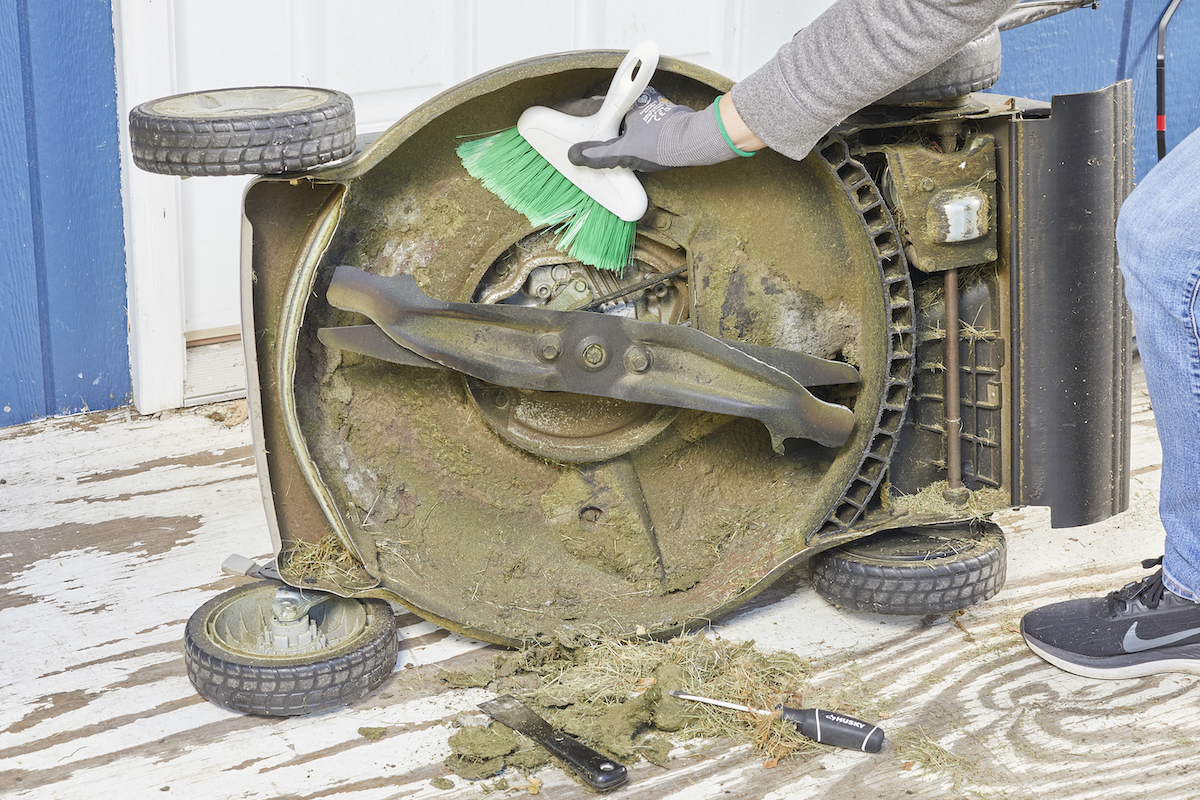

We may earn revenue from the products available on this page and participate in affiliate programs. Learn More ›
Even the best lawn mower is going to need some TLC if you want the engine to start right up on the first mowing job of the year after a long winter of sitting in storage. From filling it with fresh fuel and oil, to cleaning out the mowing deck, we’ll walk you through how to start a lawn mower and help you troubleshoot any problems you may encounter along the way.
Before You Begin
Before starting up the mower, make sure that you have all the materials you’ll need to get it started, including a replacement spark plug, fresh gasoline, and motor oil.
SUPPLIES
Below is the gear you might need to get your lawn mower up and running, so you can mow the lawn. It’s more than likely, however, that you won’t need more than a few items. The equipment you use will depend on whether there’s anything wrong with the lawn mower, and the troubleshooting tips you follow below.
Unleaded gas
Funnel
SAE 30 motor oil
Clean rag
Socket wrench
Spark plug socket
Brake cleaner
Replacement spark plug (consult the owner’s manual for the appropriate part for your mower)
Garden hose
Wire brush
Pry bar
How to Start a Gas Lawn Mower
Step 1: Check the mower’s gas and oil levels.

- Look for the large black cap on the top of the lawn mower engine. It should have an imprint of a gas tank on it. Unscrew the cap and see if you need to add gas.
- Next, locate and remove the oil pan cap, which is usually on the opposite side of the engine from the gas cap and has an imprint of an oil can on it.
- Remove the oil cap by giving it a half turn counterclockwise. You’ll know you have the right one when you pull the cap out and there’s a dipstick attached to it.
- Wipe the dipstick clean with a rag, replace it, then pull it out again and check the oil level. The oil level should be between the two marks on the stick.
Step 2: Add fuel and oil, if necessary.

- If you’re adding gas, use the same unleaded gas you put in your car and not the 2-stroke gas/oil mix that other yard equipment uses. Most push mowers hold between 1/4 and 2 gallons of gas.
- Use a funnel and resist topping it off to avoid spilling the gas as you add it to the tank.
- If you need to add oil, check the lawn mower’s user manual to see what oil weight the manufacturer suggests. If the manual does not specify an oil type, use SAE 30, the best oil for a lawn mower.
Step 3: Prime the engine, if necessary.
- Priming the engine is necessary only if the lawn mower has a primer bulb, which is a small flexible rubber bulb. Many newer gas lawn mowers don’t have a primer bulb.
- Locate the primer bulb on the engine.
- Squeeze the bulb three to five times to circulate gas from the fuel tank into the carburetor.
Step 4: Start the engine.
- Notice how there are two handles on the lawn mower, each running horizontally only inches apart from the other. Press and hold these handles together.
- Holding the handles together, pull the starter cord and with considerable force to start the engine. Sometimes it can take several attempts before pulling the starting rope achieves the intended result: a purring motor.
How to Start an Electric Lawn Mower
Compared to a gas lawn mower, an electric lawn mower is a lot easier to get started. Still, there are a few key steps to follow.
- If your electric lawn mower folds up for storage, start by unfolding the handle and extending it if needed. Many electric lawn mowers will not start until the handle is fully unfolded and extended.
- Some electric lawn mowers have a safety key you must insert in order to start the mower. If your mower has one, make sure it’s in place.
- Like gas lawn mowers, electric lawn mowers have a horizontal bar you need to hold together with the horizontal handlebar for the mower to start. Hold these two bars together, then press the start button to start the motor.
What to Do if Your Lawn Mower Still Won’t Start
If you’ve already checked that the mower has ample oil and gas and it still won’t get up and running, it’s time to start troubleshooting. Here are some lawn mower problems you might encounter, and possible solutions to those problems.
Problem: The mower starts up briefly, then quickly stalls out.

- Solution 1: If you are starting your lawn mower for the first time after a long off-season in the garage, gas that was left in the machine may have gone bad, causing it to stall out. The solution is simple: siphon the old gas and replace it with fresh fuel.
- Solution 2: If you have fresh gas in the engine but it’s still stalling out, the culprit is likely the spark plug. Pull the rubber cap off the spark plug and unscrew it using a spark plug socket and socket wrench. Wipe any debris off the tip and clean the electrode on the end of the spark plug with a wire brush and brake cleaner. If there are a lot of deposits built up on the spark plug or if it’s cracked, you’ll need to replace it with a new one. Otherwise, screw the spark plug back in, tighten it with the socket wrench, and attempt to start the engine.
Problem: The gas tank is full of fresh gas, but the mower won’t start.
- Solution: It’s possible that either the carburetor has flooded or the cylinder has become soaked with gas. (The smell of unburned gas is a telltale sign.) Leave your mower on level ground for at least 15 minutes, which should allow enough time for the gas to evaporate from within the mechanism.
Problem: The mower won’t start and the starter cord is difficult to pull.

- Solution: The mowing deck is likely clogged, preventing the blade from turning. Lay the lawn mower on its side so you can access its underside. Use a pry bar to dislodge any built-up clumps of grass from the mowing deck. After getting rid of the large pieces, use a garden hose to spray the deck. Give it a good scrub with a stiff bristle brush to remove stubborn debris sticking to the deck. Rinse with the hose, then turn the mower back upright and attempt to start it.
If you’ve tried these methods and your lawn mower still won’t come to life, refer to our detailed guide on what to do when your lawn mower won’t start.
For more lawn mower advice, watch our video on the most common mowing mistakes almost everyone makes.
